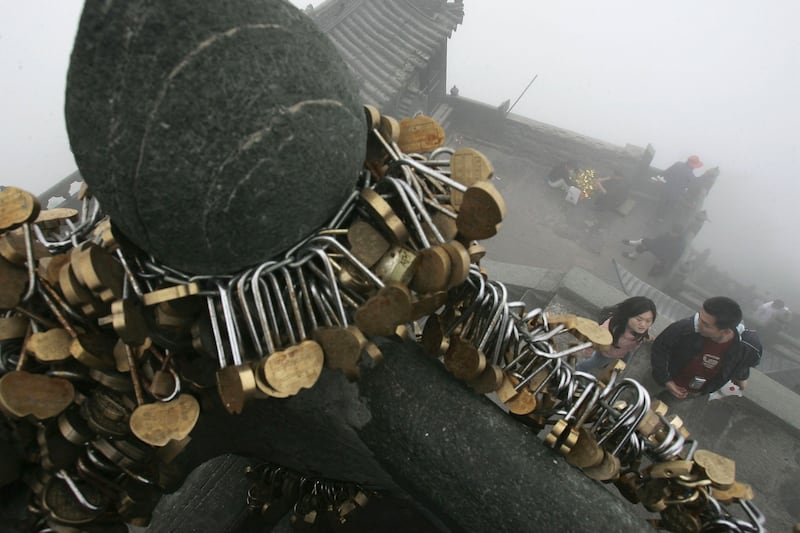Kneeling before an altar on yellow cushions embroidered with a black and white taijitu, or yin yang symbol, were two Taoist priests in blue gowns, their top-knots protruding from holes on top of their black hard-brimmed hats. As they chanted words from the pages of a prayer book, one tapped out a gentle rhythm with a gong mallet on a carved stone.
They were in a temple in Zixiao Palace on Wudang Mountain, which rises more than 1,600 metres in Hubei province, about 400km from Wuhan in the centre of China. Wudang is a Taoist holy mountain and Zixiao Palace, also known as Purple Cloud Palace, is part of a network of palaces and temples, some dating back to the Song Dynasty more than 1000 years ago.
The mountain may be better known for its association with kung fu, and tai chi is said to have originated here when Zhang Sanfeng watched a fight between a magpie and a snake. Zixiao Palace is home to a martial arts academy and on Thursday afternoon, a group of young, white-robed students were performing in one of its squares.
Tai chi is also known as shadow boxing and the students kicked, lunged and punched the air but never made contact during their elaborate, acrobatic movements. Sometimes they performed solo with swords, others with a spear, a long axe or a fan, at others they were an elegant, athletic ensemble leaping through the air or making slow, dance-like movements.
READ MORE
At 19, Ming Ruizhi has been training in martial arts for five years but he and his father watched kung fu films when he was a child and he saw men in his village practising it. His family supported his decision to go to the kung fu school, although the daily routine he described is a punishing one.
“We wake up at 5.30am every morning and run 8-10 km around the scenic road, focusing on physical fitness. We all train in this square in the morning; in the afternoon, we study cultural courses, Chinese classics, and Taoist knowledge such as tea ceremonies and Taoist instruments. In the evening, we go back to our own school for basic skills, boxing, and other training,” he said.
“The use of mobile phones and electronics is limited and we are allowed to use them once a week to call our families.”

Jake Pinnick was 20 when he left his home in Kewanee, Illinois 13 years ago for a five-year martial arts course on Wudang Mountain. The first member of his family to own a passport, he spoke no Chinese when he arrived but after six months, he knew he didn’t want to leave.
Pinnick completed the five-year course and he is now a 16th generation disciple of the Sanfeng lineage, teaching tai chi as well as practising it. He sees tai chi as more than a series of slow movements to improve health, increase flexibility and correct posture.
“Tai chi as a concept is about the balance of yin and yang, which are not opposites. They’re complementing halves of a whole that are in a constant state of transformation. So as something becomes good, it becomes bad. As something becomes left, it becomes right. And so we have this balancing change in the world. I think that understanding this rhythm is also very important, because when we understand that before things become too full we have to retreat and relax. We have to conserve energy before things become too sharp and break,” he said.
“And I think that this idea, this mentality, is really important in today’s world, where we often push ourselves all the way to the limit. We overwork. We over-exert, and we need a moment to come back, find our roots, and settle.”
Pinnick has married a Chinese woman, he speaks the language well and he is deeply integrated into the Taoist martial arts culture of Wudang. Since he arrived in China, relations between Washington and Beijing have gone into a downward spiral but he hopes to open a tai chi centre in the US to introduce more Americans to what he found on the mountain.
“It’s a way for people to see the country through the people, the tradition, the culture, the basic practises, from the point of view of health, but not from the high level kind of outlook they get from media,” he said.
“I think now it might be difficult for people to get past the barrier of what they assumed, but I think now is the best time because this is when we can really challenge our perspective and really grow, and this is what we need right now.”














